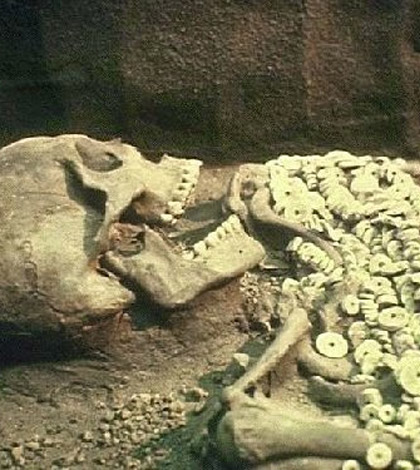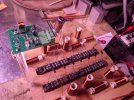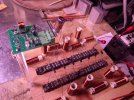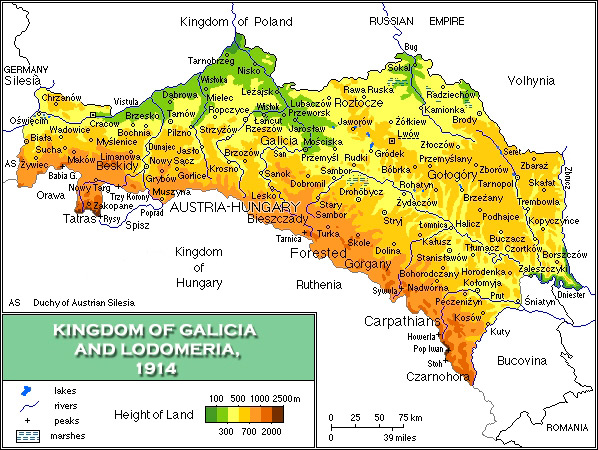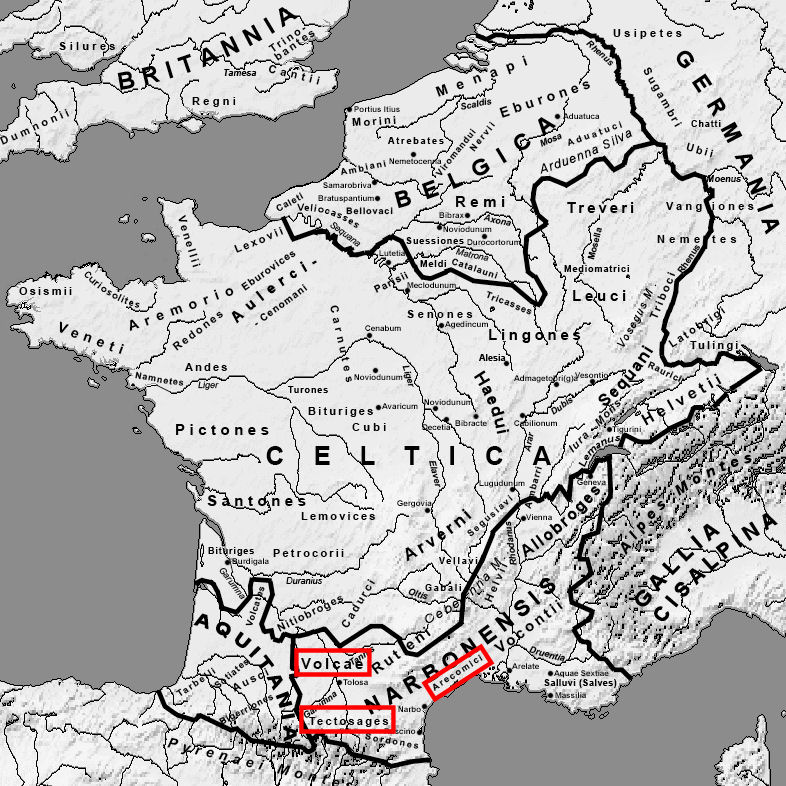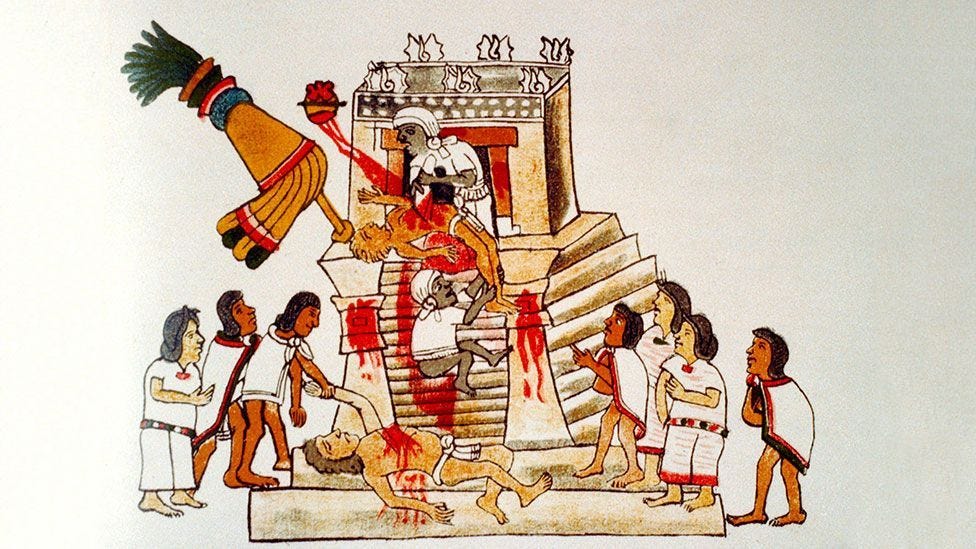August 23, 2001
Ark, Laura, Terri Burns
Q: Hello.
A: Hello.
Q: And who do we have this evening?
A: Jemmona.
Q: And where do you transmit through?
A: Cassiopaea.
Q: The first question we wanted to ask is: did the guy on our e-group, Daniel P-N, really die or was he "taken over."
A: Yes.
Q: Did he die of completely natural causes?
A: Yes.
Q: His death had nothing to do with the fact that he was researching the 11 house zodiac?
A: Close.
Q: Did it have something to do with his research?
A: Yes.
Q: Was he just not sufficiently aware of his vulnerability?
A: Yes.
Q: Okay, last time we were talking about the "M" mound in Wisconsin. You said that it was not a natural structure but that it was built for "F 353535." Could you say more about this? Was this used somehow to genetically manipulate the surrounding population?
A: Best so called lie in town.
Q: That doesn't make any sense.
A: Lay. [As in "ley" lines?]
Q: (TB) It looks like a big man laying. Is something laying there? (L) Or was it used for some kind of fertility rites? Is something buried inside it?
A: Force field generator.
Q: (L) Is it a force field generator by virtue of the kinds of rocks that are in there? Is it like rocks under a mound? {To TB} Have they ever x-rayed it to see what's under it? (TB) The whole area is a lead and zinc mining area. There's a lot of lead deposits around. Maybe they shield it, but it's supposed to be a natural formation, but the C's have said it's not a natural formation. (L) {chuckling} So maybe it's that everybody around there who "gets laid" is having some force field generator affecting them? Is that correct? Does it do something to the people in the area when they conceive children? Or do you mean ley line?
A: Close.
Q: (TB) There is an incredibly high rate of cancer in the area. Is it related to this high rate of cancer?
A: Yes. Lies are lays.
Q: (A) The cancer could be due to the lead which leaches into the water. (TB) That's true. (L) Genetically manipulate the surrounding population. Does this force field... well, yeah. Lies are lays. Ley lines, lies are lays... (TB) STS control field. (L) Is that what you are saying?
A: Close.
Q: (L) Was there really a guy named Don Juan Matus who was the teacher of Carlos Castaneda?
A: Close.
Q: (L) Was he a "composite person" as some have suggested?
A: Yes.
Q: (L) Was he a composite of several people who Carlos actually knew, as in 3rd density humans?
A: Yes.
Q: (L) Regarding Michael Topper: how accurate are the writings of Topper?
A: 57 percent.
Q: (L) Was his wife his channel?
A: Yes.
Q: (L) Was the corruption level due to the fact that they may have engaged in rituals in order to get their material?
A: Close enough.
Q: (L) Okay, who is this "final incarnation" guy presented on Val Valerian's website? Is it really somebody who is in his final incarnation as is claimed, is it made up, or is it Val himself?
A: Val.
Q: (L) Is Val really in his "final incarnation?"
A: Best not to judge.
Q: (L) Is it a final incarnation of STS or STO?
A: STS.
Q: (L) So that is how a final incarnation of STS might think and the teachings they might present?
A: Yes.
Q: (A) What is a final incarnation? (L) Somebody who is so spiritually advanced that they don't need to incarnate anymore after this life. (A) And what happens after? (L) Well, I don't know. I guess you go to 4th density. (A) Oh. I see. (TB) Okay, George Green has dictated all these "Handbooks for the New Paradigm." He claims that it comes from some entity. Who is that entity?
A: George Green.
Q: (L) Well, these books are all over the place. Who is funding them?
A: Consortium.
Q: (L) Well, that says a lot. Okay, next: is "DOVE" really a programming key word designed to target those susceptible to New Age religious programming?
A: Maybe.
Q: (L) {Reading list of questions asks TB} M*** has dialogues with Grays? (TB) Yeah. Yeah. (L) She talks to them herself? Or she is reporting dialogues that somebody else has? (TB) I'm not sure. She presents them as ones that she's had. That is one of the reasons I quit wanting to correspond with her. She was the one who had those dialogues about petroglyphs. A bunch of Grays. (L) Is M*** talking to Grays?
A: Yes.
Q: (L) Is she an "agent of the Grays" on our list?
A: Yes.
Q: (L) Okay, moving on to the next question: Are Semites a mixture of Aryan genetics and Negro genetics as I*** and I have theorized?
A: Partly.
Q: (L) Once before you talked about the "mission destiny profile prior encoding" of the Semitic genetic code structure. Of course, you talked about this being done 130,000 years ago, so that's a long time. But, was that original code structure put into the genetic code of the Black peoples...
A: Yes.
Q: ... to then be spread via their mixture with Aryans - as Semites - into other races?
A: Partly.
Q: (L) What is the other part?
A: Genetic tweaking of Semites.
Q: (L) Is there something in the sub-Saharan African genes that makes one tend more toward STO?
A: Not really.
Q: (L) {Reading from list of questions.} If not, why does there seem to be a continuing effort to wipe out these groups? Is this simply karma? {To TB} This was asked once before and the response was that it was partly karmic because, indeed, the Black peoples had a high civilization and were cruel masters of slaves. Same deal with the Jews. They are reincarnated Atlanteans and the holocaust was part of the expunging of their guilt for the former destruction of the global civilization. Okay, are we near to the time of seeing 4th density Nordics among us?
A: Close.
Q: (L) Have any of us here met any?
A: Good possibility.
Q: (L) Okay, TB wants to know about the eyes of this guy she used to know, David. (TB) Yes, what was he doing when he was manipulating me some way with his eyes? Or was that just a con? Was he not doing anything?
A: Giving an impression of great spirituality that was nonexistent.
Q: (L) Does that sound right? (TB) It worked. I guess. I'd never thought about it that way. (L) Okay, now about the Pig God: what is it about pigs that makes them ideal as a symbol for the manifestation of God energy, or even as a vehicle?
A: Genetically manipulated RU 353535.
Q: (L) What does that code relate to?
A: Race underpinning tribal code structure.
Q: (L) Are you suggesting that some codon of human DNA that relates to a "tribal code structure" was spliced into an animal?
A: Close.
Q: (L) Why an animal and not a human being? Is it because the STS energy is so contractile that a pig is an appropriate receptacle?
A: Yes.
Q: (L) That's bizarre. Moving along. What sort of 4th density weapons was copper used for?
A: Mostly conduction of EM energies.
Q: (L) Now, I have a little problem with my writing. First of all, did the eruption of Thera occur in 1627 BC or thereabouts?
A: Close.
Q: (L) What stimulated the eruption of Thera?
A: Venus.
{Here I think that "Venus" is a code for the giant comet described by Victor Clube}
Q: (L) Well, about 40 years after that there was the comet cluster, in 1588 BC, correct?
A: Yes.
Q: (L) Well, it seems that Nefertiti disappeared from history in the 12th year of the reign of Akhenaten. He then died in the 17th year of his reign. If Nefertiti was Sarah, where was she during this five year period, if Akhenaten died going after her when Abraham/Moses carried her off?
A: Locked up.
Q: (L) So, Nefertiti is Sarah and Abraham came and rescued her somehow, is that correct?
A: Yes.
Q: (L) And that happened at the time of the passage of the comet cluster, between 1627 BC and 1588 BC - dramatic events which is what enabled that particular drama to take place...
A: Yes.
Q: (L) So Abraham retrieved Sarah and Akhenaten went after them and drowned in the river or something?
A: Close.
Q: (L) So, from 1627 BC to 1588 BC - that's 39 years - almost exactly 40 years of "wandering in the desert," so to say. So they must have escaped when Thera blew and forty years later, the comets came. What was Abraham and his crew doing during that time?
A: Bedouins.
Q: (L) How many were in this tribe?
A: 623.
Q: (L) So it wasn't multiple thousands of people as the Bible would have us believe. Okay, is Abraham the same individual as is presented as his son, Isaac?
A: No.
Q: (L) Did Sarah, known to the Egyptians as Nefertiti, give birth to a child when she was 90 years old?
A: No.
Q: (L) Was Sarah the mother of Isaac?
A: Yes.
Q: (L) Why did Abraham want to sacrifice his son?
A: Did not happen.
Q: (L) Who was Hagar the Egyptian?
A: Princess of Egypt.
Q: (L) Was she Sarah's maid?
A: No.
Q: (L) Was she Sarah's daughter?
A: Right nurture to.
Q: (L) What do you mean? I don't understand.
A: Sara's daughter by Akhenaten.
Q: (L) Did Abraham have a child by Hagar also, his wife's daughter by another man?
A: Yes.
Q: (L) Well, that's pretty incestuous. Did Sarah actually get so jealous of her own daughter's child that she demanded that Abraham abandon her?
A: Close.
Q: (L) When did this tribe finally arrive in Israel and settle down. Was this after 40 years living as Bedouins?
A: Pretty much.
Q: (L) Well, I still have to deal with this King David issue. He was like a Robin Hood. Now, in another direction, what's this deal about Abraham talking to God. Is this where the whole monotheism came in?
A: Close.
Q: (L) So, it started out with Abraham and his tribe. Did he have reinforcements of his Levite brothers who came and joined his tribe from Hittite land?
A: Close.
Q: (L) Are there any details of this story that I haven't covered that I ought to?
A: David was a Levite.
Q: (L) Was he of the line of Abraham?
A: No.
Q: (L) Did he come from "Hittite land?"
A: Close.
Q: (L) How many generations before he was born did his family come to the area of Palestine?
A: 5.
Q: (L) Were they relatives of Abraham?
A: Somewhat.
Q: (L) Distantly related. So, what did David do? Came along and gathered the people together?
A: Yes.
Q: (L) Did they, or did they not, have the Ark of the Covenant? Was this given to this group of people by 4th density?
A: Close.
Q: (L) Who was it originally given to?
A: Abraham.
Q: (L) Who gave it to him?
A: Sara.
Q: (L) Is the story of Rachel stealing the household gods from her father may have really been the story of Sara stealing the Ark from Akhenaten?
A: Yes.
Q: (L) No wonder Akhenaten was hot to follow them. He wasn't after Sara, he wanted his Ark back.
A: Yes.
Q: (L) Who gave the Ark to Akhenaten?
A: STS 4th Density.
Q: (L) I begin to smell a rat! We have read that David's grandmother, Ruth, was a Moabite. That story is a whole other mystery too. Okay, where does the story the Jews tell about being imprisoned, enslaved, crushed, etc come from? What is the source of this tribal memory of being in captivity?
A: Sumerian concept.
Q: (L) Okay, that makes sense. So the Sumerian contribution to the Bible stories mix is the enslavement idea. They had this ancient legend of having been genetically created to be slaves. They were servants to the gods, but not the Pharaoh. Okay, going in another direction: what was the use of the "12 mirrors" that the Chinese emperor Huang Ti supposedly used?
A: Collection of energy.
Q: (L) Were they really mirrors?
A: No.
Q: (L) Okay. They were just perceived as "mirrors" by the people who saw them, or the transmission of the information was corrupted. (A) What energy did they collect?
A: Electromagnetic.
Q: (L) What was this energy used for?
A: Power for his craft and other machines.
Q: (L) Well, where did Huang Ti come from?
A: Orion Lab.
Q: (L) And he had things that were described in the literature as robots or mechanical guys, didn't he? So those were his other machines. What did these machines do?
A: Many things.
Q: (A) I want to know... okay, they were collecting EM energy. Where was this energy coming from. I would also like to collect EM energy. Was this energy from the EM field, was it solar energy, from zero-point energy, or cosmic energy, or what? Where was this energy coming from?
A: Solar moon.
Q: What does that mean?
A: Reflected and therefore modified.
Q: (L) So that suggests the "mirror" concept of Huang Ti. Okay, previously you said that Rock Lake was not a necropolis. What was it?
A: Control center.
Q: (TB) Did Devil's Lake have the same purpose?
A: Close.
Q: (L) {Reading} The Gottschalk Rock Shelter shows the story of Red Horn Giants and the Thunderbird. What is this story depicting? What does the Thunderbird depict?
A: UFO.
Q: (TB) If we were to identify the Unidentified Flying Object, what would it be?
A: STS craft.
{After a lot more reading, I actually think that the Thunderbird and Sky serpents represented the giant comet break-up described by Victor Clube. But then, the Cs have made allusions to 4D that might include weather as warfare and comets as "craft" though not in the 3D sense.}
Q: (L) {Reading from list of questions.} The Maori origin of kites. Why did the Maori fly kites?
A: To attempt communication with Gods.
Q: (TB) Which is exactly what their myths state. (L) Which gods?
A: STS.
Q: (L) Well, we should have figured that. There's hardly been anybody else running things for the last 300 thousand years or so. Okay, going in another direction: what other names were the Danaans known by?
A: Scythians.
Q: (L) How did the Scythians get to Egypt?
A: VIA Akkad.
Q: (L) Was Sargon a Scythian?
A: Yes.
Q: (L) Were the Hittites a genetically altered group of Scythians?
A: Close.
Q: (L) Where do the Scythians come from?
A: China.
Q: (L) How did they get to China?
A: From the Caucasus.
Q: (L) So, they started off from the Caucasus, went to China, and were later driven back West by the Chinese? Is that it?
A: Yes.
Q: (L) Northern China or Southern China?
A: North.
Q: (L) What is the difference between Galle and Gaul?
A: Clue.
Q: (L) Do they both refer to France?
A: No.
Q: (L) Does Galle refer to Rhineland?
A: Close.
Q: (L) I discovered today that one of the Maltese islands, the one that is now called Gozo, was once called "Gaul." Is that getting closer?
A: Close.
Q: (L) You aren't going to tell me that. (TB) And you're sure it's not Sri Lanka? (L) Is it Sri Lanka?
A: No.
Q: (A) Why did Einstein and Bergman abandon their 1935 theory without following it up? Because it was wrong?
A: No.
Q: (A) Why did they abandon it?
A: Scared of consequences.
Q: (L) Scared of consequences that they saw in the theory, or scared of consequences that were externally suggested?
A: Both.
Q: (L) So, once they saw the ramifications, they must have talked to somebody...
A: Close.
Q: (A) What is the relation between the fourth density that we know and the fifth dimension of Einstein and Bergman?
A: Identical.
Q: (A) Why don't we know about this fifth dimension?
A: Barriers to concept imposed by 4D STS.
Q: (L) Are these barriers to the concept part of what I have been approaching in my writing - the imposition of the idea of linear time by the monotheistic philosophy and religious controls - which is resulting in so much attack?
A: Yes.
Q: (L) Indeed. It terrifies people "religiously" to even think about it. (A) We know what it means that I am distant from you by 20 inches in space. I know what it means to be distant from the future by 20 minutes in time. What does it mean to be distant from something in the 5th dimension? I can't think of it...
A: Distance is a 3rd density constraint of consciousness energy grid structure.
Q: (L) Are you saying that consciousness energy is extruded into a grid structure? I don't even know how to ask. (A) Einstein, Bergman and Bargmann, were using distance to measure distance in the 5th dimension. They were not using consciousness, they were not using a grid, but they were using distance. And it was supposedly a good theory because they had to abandon it. So, none of them said anything about consciousness, yet they were using distance. So, my question is, is distance an expression of consciousness? Is there a distance from one point to another point expressed as, say, 2 million atoms? Is that a distance? What does consciousness have to do with this? How to model atoms in this 5th dimensional world?
A: As Grid.
Q: (A) Grid of what?
A: Energy.
Q: (A) What is the 5th dimension role in this grid?
A: Rim of Cylinder.
Q: (A) What is rim?
A: Surface of loop.
Q: (A) Loop. Loop in 3 D or loop in 5th?
A: 5.
Q: (L) Sounds wacky to me. (A) I'll have to teach them some algebra.
A: Yes. Grooving takes time.
Q: (TB) Seems pretty groovy to me. (L) Yes, but it's application that counts.
Instead of giving us the center dead-on answer, very often it seems to be slightly to the left or the right so that we have to work for the solution. (TB) What did Einstein think would come out of his 1935 theory?
A: UFT.
Q: (A) I don't understand. If he saw the consequences - it was 1935 - and he thought "okay, it's a good theory and I can see the consequences," then what is the reason that for the next 20 years he was all the time working on all the wrong theories? What's the purpose of working on what is wrong?
A: Paid.
Q: (A) Well. Money? What did he need money for? (L) To live. (A) He could move to any other university and do whatever he wanted! (L) Not if the Consortium said "no." He could go nowhere and do nothing. (A) Okay. Why. Maybe he signed a non-disclosure until the end of his life.
A: Yes. And Good night.
Q:
Nantucket's longest standing real estate brokerage
End of Session

cassiopaea.org


